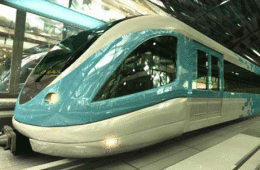As investors and agents try to find the price rate for properties in Dubai’s real estate market, analysts have begun to pinpoint certain factors that have seen some units begin to recover their price tags, while others continue to plummet. These include proximity to amenities and the upcoming launch of Dubai’s Metro system.

‘[Price differentiation] was previously based on factors such as location, views and the quality of finishing,’ according to Landmark Advisory’s accompaniment to their July property price map.
‘Now environmental factors are influencing consumer decision-making; for example in some developments units in close proximity to high voltage power lines are renting for lower rates than similar units located farther from power sources.’
As end-user investors look to individual attributes it becomes harder for analysts to predict conclusive patterns for the sector as a whole.
While the price map synopsis anticipates further decreases in average rents as a whole during the third quarter of 2009 it notes that: ‘Signs of rent stabilization exist, and some landlords are still experiencing robust demand for higher quality rented homes in premium locations.’
Limited price rises
Landmark notes a similar trend in terms of property sales, pointing to areas such as Jumeirah Islands and the Green Community, which have begun to experience price increases.
‘Smaller villa developments with a limited supply that have tapped into sufficient value recognition among end users with regards to location, layout, build quality and amenities/facilities are among those experiencing price increases.’
Mass developments with no distinguishing traits, however, are continuing to see falls in asking prices, with the decline particularly evident in apartment-heavy projects – which has been exacerbated by the amount of supply to come onto the market in 2008.
The report does note that ‘distressed sales’ are beginning to thin out as sellers withdraw units that do not meet asking prices.
‘People have also seen a number of sellers saying that they’re not going to accept any less [than the asking price], they’re calling a floor on it’, says Heather Wipperman-Amiji, CEO of advisory firm Investment Boutique (IB).
‘But some of these properties are mortgaged, and if they take a certain loss they’re going to have to repay the bank out of their own pocket,’ she explained to AME Info. ‘So I think the hope is, because there’s a lot of chatter that the market is going to come back, if they can hold on until it does, then maybe they won’t have to dip into savings to pay back the financing. They’re saying that it doesn’t make sense for them to sell at this price.’
Metro effect
Investment Boutique has also analysed the potential effect on unit prices of the imminent roll out of Dubai’s Metro project, which is scheduled to launch on September 9 this year.
Having studied the effects on prices of similar transport infrastructure projects in the Netherlands, Greece, India and France – all of which have come online in the last two decades – IB notes that all have had a positive impact on developments within close proximity.
Dutch properties saw an average increase of 25% (topping at 33% for proximity to high frequency stations), residential properties in Greece that were within 250m of a station saw an average increase of 8%, properties in Delhi rose by an average of 10% to 35% (with some districts seeing increases of up to 80%), and new tram lines in a western Parisian district pushed prices up by 5%.
IB notes that communities that are on the Red Line, which will run across Dubai, have historically seen rises in line with major announcements regarding the Metro’s progression, and expects these to see similar stabilization/rises once the service is launched.
Two areas in particular that are singled out as potentially benefiting are the Marina, which has managed to so far hold most of its value partially through increased tenant traffic from Abu Dhabi workers and the amenities on offer, and Downtown (Business Bay, Downtown Burj Dubai, DIFC and the Trade Centre), which has suffered some of the sharpest price drops since mid-2008.
These, and areas with good service from the Metro, are expected to benefit post-September (which will also see the opening of Emaar’s flagship Burj Dubai tower), although potentially at the expense of increased supply coming online in more outlying districts such as Discovery Gardens or the International Media Production Zone (IMPZ).
















